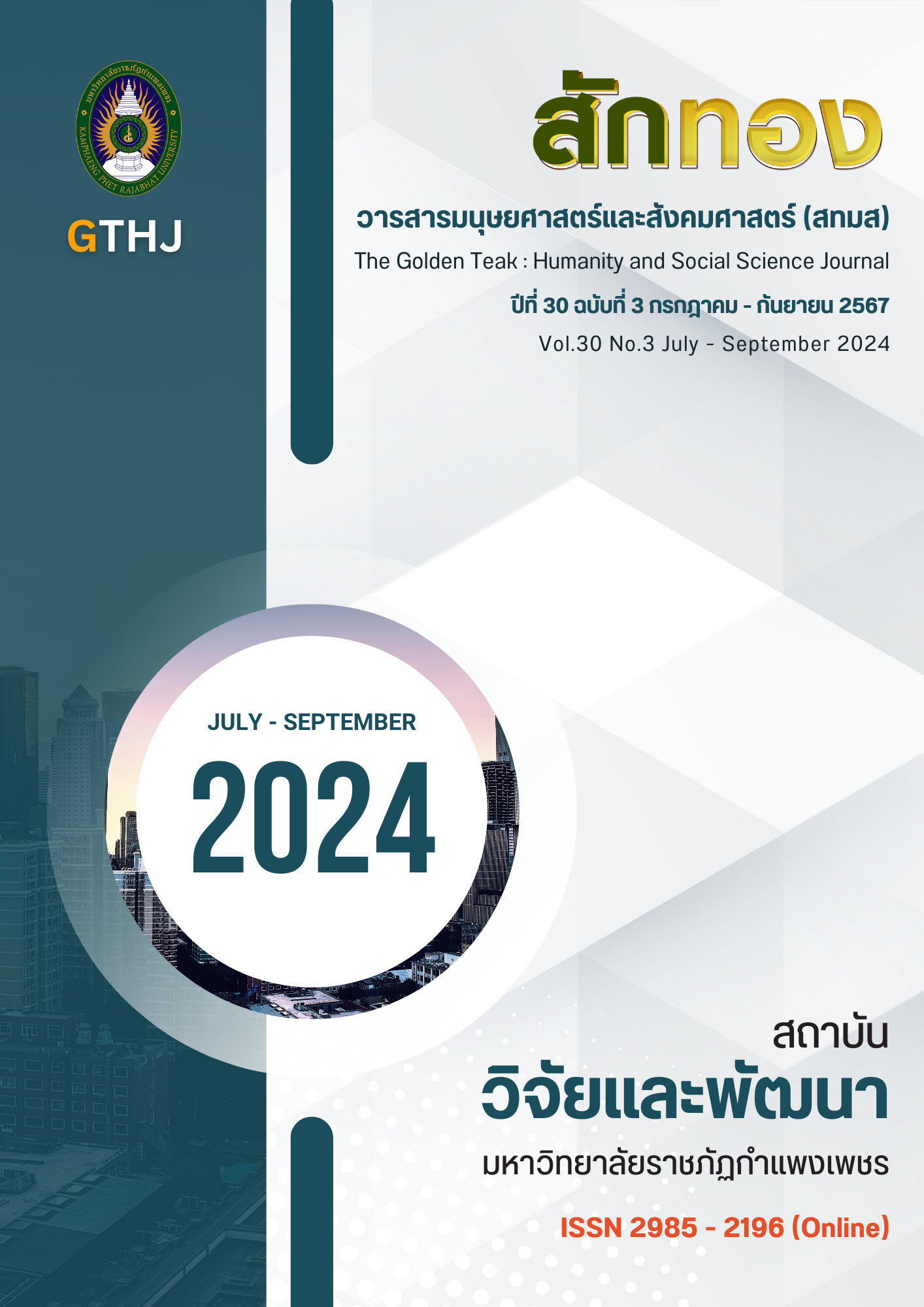Guideline of Development Teacher’s Competency Innovator Under the Office of the Basic Education Commission
Main Article Content
Abstract
This research aims to study components, indicators, current conditions, and guidelines for innovator competency development of primary school teachers Under the Office of the Basic Education. Commission Use research methods that combine quantitative research methods and qualitative research to collect information from relevant documents and research. Inquire about the current situation of primary education administrators in the northern region with a sample of 375 people. It was obtained by multi-stage random sampling from the population of 5,613 and interviewed 7 experts, obtained by purposive selection. The research tools were content analysis form, questionnaire and interview form. Data were analyzed by induction content analysis, mean and standard deviation.The research findings were as follows : 1) Components and indicators of teacher innovator competence consisted of 6 components as follows : 1.1) Creativity 10 indicators 1.2) Individual personality 8 indicators 1.3) Questioning 6 indicators 1.4) Knowledge and practice 9 indicators 1.5) Social networking 7 indicators and 1.6) Experimental 10 indicators 2) Current condition, teacher innovator competency Under the Office of the Basic Education Commission, it was found that the overall level was moderate. When considering each aspect, the 2nd aspect is personal personality at a high level, followed by aspect 3, questioning, at a high level, and aspect 1, creativity in moderate level, respectively. 3) Guidelines for teacher innovator competency development under the Office of the Basic Education Commission found that 3.1) setting policies, practices and goals, including allocating sufficient budgets. 3.2) creating a learning organization through teacher development programs. Workshops. 3.3) Create a professional learning community PLC. 3.4) Adjust the conceptual framework Mindset to raise awareness of innovators. 3.5) Support and promote the thinking process in the classroom from teachers to students based on learning with research. 3.6) Create systems and mechanisms for social innovation, culture and atmosphere for sharing learning. 3.7) Develop research-based innovation. Teacher development program in educational institutions through Design Thinking. 3.8) Adjust educational institutions to have innovative development strategies. It consists of vision, mission, structure and goals. 3.9) Change the organization. Building quality to strength Create an ecosystem of innovator development. 3.10) Emphasis on being a good communicator and creating a culture of collaboration driven by the mechanism of digital technology.
Article Details

This work is licensed under a Creative Commons Attribution-NonCommercial-NoDerivatives 4.0 International License.
บทความที่ได้รับการตีพิมพ์เป็นลิขสิทธิ์ของวารสาร สักทอง : วารสารมนุษยศาสตร์และสังคมศาสตร์ สถาบันวิจัยและพัฒนา มหาวิทยาลับราชภัฏกำแพงเพชร
ข้อคิดเห็นใดๆ ที่ปรากฎในวารสารเป็นวรรณกรรมของผู้เขียนโดยเฉพาะ ซึ่งมหาวิทยาลัยราชภัฏกำแพงเพชรและบรรณาธิการไม่จำเป็นต้องเห็นด้วย
References
Armstrong, E. & Barsion, S. (2013). Creating "innovator's DNA" in health care education. Academic Medicine. Journal of the Association of American Medical Colleges, 88(3), 343-348.
Bagley, O. (2014). The 10 traits of great innovators. [Online]. Available : https://www.forbes.com/sites/rebeccabagley/2014/01/15/the-10-traits-of-great-innovators/#a2b480d4bf4e [2020, December 24].
Chalarak, N. (2021). Elements of being a teacher, an innovator in education in the digital age for Sustainable local development. Rajabhat Chiangmai Research Journal, 22(3), 94-108. [In Thai]
ChamChoi, S. (2020). Secondary school administration innovation to create innovators. Journal Education Naresuan University, 22(2), 193-213. [In Thai]
Chamchoi, S. (2022). School administration to create young innovators. Bangkok : Chulalongkorn University Press. [In Thai]
Chimthongdee, N. (2013). School management strategies for management innovation Learn. Bangkok : Faculty of Education, Chulalongkorn University. [In Thai]
Christensen, T. (2015). The 5 Traits of Successful Innovators, According to Science. [Online]. Available : http://99u.com/workbook/ 21113/the-5-traits-ofsuccessful- innovators-according-to-science [2020, December 24].
Couros, G. (2014). Characteristics of the “Innovator’s Mindset”. [Online]. Available : https://georgecouros.ca/blog/archives/4783 [2020, December 24].
Cronbach, L. J. (1990). Essentials of psychological testing. (5 th ed.). New York : Harper Collins Publishers.
Dyer, J. H., Gregersen, H. & Christensen, C. M. (2011). The Innovator’s DNA : Mastering the Five Skills of Disruptive Innovators. England : Harvard Business School Publishing.
Education Council Secretariat. (2019). Report on the results of the study of system management guidelines Educational quality assurance within educational institutions linked to standards national education using OKRs : Objective and Keys Results. Nonthaburi : 21 Century Company Limited. [In Thai]
Education Council Secretariat. (2020). Integration monitoring and evaluation STEM knowledge in educational institutions. Bangkok : Office of Educational Management Evaluation. [In Thai]
Education Council Secretariat. (2022). Direction and trend of education management in the era of COVID-19. Bangkok : Pim Dee Co., Ltd. [In Thai]
Engel, K., Dirlea, V., Dyer, S. & Graff, J. (2015). Best Innovators Develop a Point of View on the Eriksson, J. (2013). The five characteristics of successful innovators. [Online]. Available : http://blog.bearingconsulting.com/2013/10/27/the-five-characteristics-of-successful-innovators/ [2020, December 24].
Furr, N. & Dyer, J. (2014). Choose the right innovation method at the right time. Boston : Harvard business review.
Hankla, R. (2016) .The development of strategies for the administration of educational institutions at the level primary education to promote community participation in the care system Student. Bangkok : Faculty of Doctor of Education Chulalongkorn University. [In Thai]


